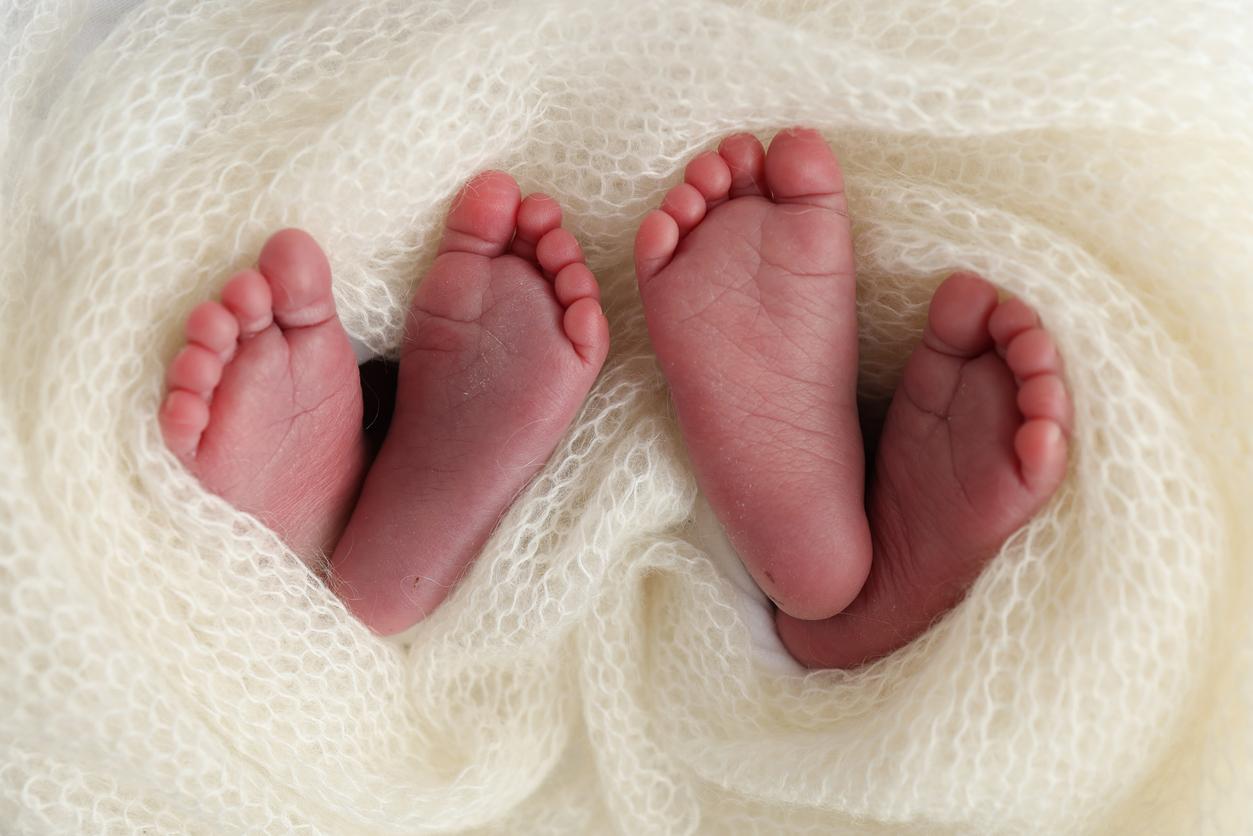Guinean Siamese babies have been separated at the Necker Hospital in Paris. This malformation, which is observed following twin pregnancies, mainly affects girls.

It is a medico-surgical feat which was carried out in the greatest secrecy at the Necker Hospital in Paris on May 26, 2015. Thanks to The Chain of Hope who repatriated them to France, Guinean Siamese (Hassan and Boubacar) aged four months were successfully separated. Why actor told you more about this malformation that occurs after twin pregnancies.
This phenomenon is due to a monoamniotic monochorial twin pregnancy (a single placenta and a single amniotic pocket). In a newsletter published a few years ago, Prof. Corinne Hubinont, obstetrician, explained to Saint-Luc University Clinics (UCL) of Brussels how such a pregnancy is possible: “We are faced with a pregnancy of identical twins but where the separation did not take place immediately. In principle, when twins are formed, it happens a few days after ovulation. If the separation occurs later, there is a partial fusion of the two embryos. The difference therefore lies in the time elapsed between ovulation and the separation of the embryo in two. In the case of Siamese, division usually occurs twelve to fourteen days after ovulation and, therefore, is incomplete. “
Is the operation still possible?
When there is only one heart, surgery is excluded. In the case of partitioning the liver, we can operate if there is a way to divide it. If the children are connected by the bony cranial vault, separation is possible provided the brain is not fused.
Today, let’s say that we can operate on certain Siamese, on the basis of a good preoperative assessment. However, it should always be taken into account that one of the two children may die following the separation. The recent case of little girls who shared the same intestine demonstrates this: the weakest child or the least able to survive had to be sacrificed. Finally, we must not forget that many poor countries unfortunately cannot carry out this type of intervention, due to lack of access to highly specialized medicine.
To date, there are 200 separated Siamese twins in the history of medicine.
Is it a frequent malformation?
According to the “medical vulgaris” website, this type of malformation is rare since it represents barely one birth in 50,000, or even 100,000. This is approximately 1% of twin pregnancies. And one in 10,000 monozygotic pregnancies (twins from the same egg). India seems more affected than other countries, but it is impossible to explain this high incidence.
In the years to come, experts believe that an upsurge in the births of Siamese children could perhaps be due to the proliferation of assisted pregnancy techniques that increase the likelihood of giving birth to identical twins. Although the theoretical risk is increasing, it still remains marginal to this day.
Thus, there are approximately 140,000 births of this type per year, of which only 5% of Siamese are linked by the head. Siamese twin brothers are extremely rare, the children united by the body being “90% girls” according to the Assistance Publique-Hôpitaux de Paris (February 2009).
Life expectancy
According to statistics, 40% of Siamese die at birth. And a third in the first 24 hours. Only one in 10 million cases survives the first few years. However, as in all categories, the Siamese also have their longevity record. Among them, the Americans Ronnie and Donnie Galyon who are the oldest Siamese brothers in the world. They celebrated their 63th birthday in October 2014, thus breaking the record for the Bunker twins to whom we owe the expression of “Siamese brothers”.
The Galyons are not the only twins to have lived so long since the famous Bunker brothers: the Italian Siamese Giacomo and Giovanni Tocci lived to the age of 63 (1877-1940) and are listed in the Guinness World Records. .
Source: YouTube video
.
















